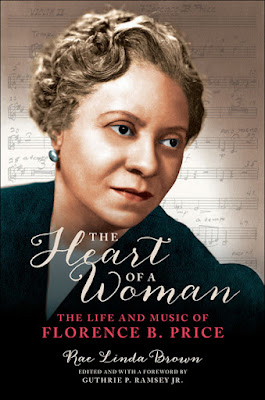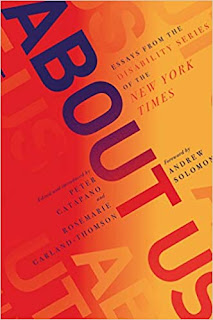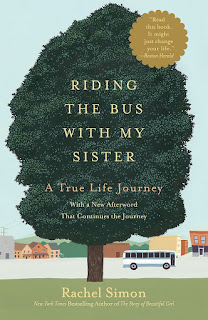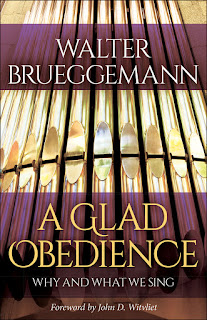In the light of recent events, I've been looking at some of the
materials from when I taught history, and the background to that from
grad school classes. One important book was Winthrop Jordan's
White Over Black: American Attitudes Toward the Negro, 1550-1812 (Penguin,
1969). And I've referred to it in several social media posts--so rather
than keep repeating myself, I decided that it would be better to share
my notes here. Please keep in mind that these are notes and forgive the
grammar and short phrases.
Also from class, this poster
is a little reminder: racism isn't new, it didn't end with the Civil
War, and it wasn't confined to the southern states. A review like this
can only scratch the surface--the book is well worth reading. So here we
go.
Ch
1, First Impressions: Initial English Confrontations with Africans
shortly after 1550 English voyagers first reached West Africa, they found
the natives different in appearance, religion, manner of living.
Color was most obvious and immediate. Black and white had long been opposites
with emotional and moral impact in England, thus the Africans were under an immediate
disadvantage. There was also scientific curiosity, especially with discovery of other colors as in
North America. Soon clear to most that it was not from sun or
climate. Naturalistic explanations were challenged by Biblical readings; a
few allowed God’s curse on Ham to be of color. Religious difference
was easier to categorize–heathen. They were also viewed as “savage” or failing to meet English
ideas of civilization; this led to much debate over whether this was inherent and
alterable. Adding to this was discovery of chimpanzee (orang-outang)
at same time, whose human resemblance arose further curiosity; linked
to black men by perceived sexual wantonness (3-43).
Ch
2, Unthinking Decision: Enslavement of Negroes in America to 1700
there's no
evidence that slavery was part of first English settlements in America
or even intended, but it grew: the first blacks arrived in Virginia in
1619,
1640-60 evidence of enslavement, after 1660 evident in statute books.
Not enough evidence to explain how and why this came to be. The New
World
placed pressures on traditional controls. Plentiful land, scarcity of
labor, need for cash crops developed three systems: free wage labor,
temporary servitude (most common in early settlements), and slavery.
Common law was well behind social practice; although servitude was
not practiced and liberty valued, its ground remained. Slavery had
persisted through history in
Iberian peninsula, Portugese explorers had captured Negroes for
slaves, and some were sent to American settlements by 1550. Although
English were prejudiced for liberty, American social and economic
conditions called for some form of bound labor. New England had less
demand for labor, but as early as 1638 there were slaves, but
restricted to “strangers” or justified as punishment for crime and
war captivity. In VA and MD, tobacco became a cash crop, requiring
cheap labor. First stage, 1619 arrival of Negroes,
after 1640 evidence that some were in slavery, and matter of law
after 1660. By
1640 some are serving for life and posterity–others recorded as
limited indenture; but all are considered suitable for field work
while whites are not; enslavement and discrimination rise together in
mutual cause and effect. 1664, English took over Dutch colonies,
whether Negroes were slaves is not clear, but slavery flourished in
New York. In the Carolinas it was deliberately started as a colony from
Barbados. English distinguished themselves from others, and
distinguished among the non-English, allowing Scotch and Irish a
closeness, but not equality, while not allowing slavery, even for
Catholics. Indians and Negroes seemed radically different. Consistent
factors in slavery are economics, inability to struggle against
English; attitude–heathen and thus not Christian, civilized,
changing from religion to nationality, then complexion (44-98).
Part
2, Provincial Decades 1700-1755
Ch
3, Anxious Oppressors: Freedom and Control in a Slave Society
a period of growth without appreciable opposition, part of increasing
diversity that included Scotch-Irish, Germans. Negro population
varied, 25% NC, 30% MD, 40% VA, 60% SC, but spotty in north: 15% NY,
8% Boston, RI 3%, NJ and PA 8%. In plantation of the south, legal confusion
over status, giving rise to slave codes detailing status,
compensation, patrols, militia; fear of rebellion was constant. Free
Negro considered dangerous as potential fomenter of revolt, 1741 NY
case shows assumption they were “more Negro than free”. Growing
pattern, widespread before Revolution, that all were barred from
social participation, restricting residence, voting (101-135).
Ch
4, Fruits of Passion: The Dynamics of Interracial Sex
began almost immediately, rivaled revolts as source of tension;
colonists and travel writers show that every social rank engaged in concern;
enough similarity to allow desire and gratification, enough
difference to make public aversion. A few legal interracial marriages
occurred, mostly in New England, mostly of Negro men and lower-class
white women; but prohibited in all southern colonies and MA, PA. But
concubines were openly taken in south. SC writings open about
passionate advances of Negro women, justifying their infidelity.
Negro men and white women became source of tension during revolt
rumors, probably representing more a reaction to fear than reality.
Tendency to lump all mulattoes together as Negro socially and
legally, a denial that the condition existed (136-178).
Ch
5, The Souls of Men: The Negro’s Spiritual Nature
Christianity was universal in asserting need to care for all souls,
conversion of slaves a source of tension for it implied a sameness,
reducing distinct status of white; coupled with persistent idea that a Christian
should not hold another Christian in slavery (well before 1729, all
southern and 2 northern colonies had laws that baptism did not
necessitate manumission); fears that conversion fostered rebellion or
at least discontent. To many, they seemed too ignorant to educate, or
at least a great challenge. Those interested in conversion first
asserted, in response to chief obstacle, that it would make for
better slaves by encouraging obedience to masters. Revolution began
to erode ideas of social subordination, but it took some time for
them to be seen as inconsistent with slavery–aside from Quakers and
Judge Samuel Sewall, who wrote one of the earliest anti-slavery
tracts, 1700, following a few Puritans who saw failure to offer the
gospel as a most serious offense. New England, with few Negroes and
powerful clergy, tended to accept them in churches; in south clerical
influence was weak despite Anglican establishment (bishop in London).
Conversion was also viewed as outsider meddling, which struck a
growing sensitive point in the colonies. Around 1740, Great
Awakening, intensity of personal conviction, beckoned Negroes
(179-215).
Ch
6, The Bodies of Men: The Negro’s Physical Nature
from 15th
century on, travels and discoveries led to new information, and
various races gained attention. Color was an early grouping
characteristic as scientific description became popular. Initial
distinctions were clearly of types, with no hierarchy socially; to some the ideas
of Chain of Being and discovery of Negroes and apes at same time
placed the two in association; although there was a barrier between
human and beast and the Negro was clearly man to all. Origin and cause of appearance of Negro and Indian
were cause of discussion that mixed Bible, observation, and
speculation. Notable that whites presumes Adam to have been white;
blackness itself became sufficient cause for categorization, and was
easily picked up under American slavery. There is little, if
anything, to suggest that anyone saw internal differences beyond
tropical disease and sometimes ability to labor in hot climates
(216-265).
Part
3, The Revolutionary Era 1755-1783
Ch
7, Self-Scrutiny in the Revolutionary Era
after Great Awakening, growing awareness of American position, sense
of destiny, diversity; consciousness of prejudices and awareness of
race issues. Quakers first to protest slavery, as result of
self-examination after 1754 French war, pushed by John Woolman,
oppressive to both owner and slave, is unscriptural and inhumane,
based on color and selfishness. Discovery of prejudice a widespread
occurrence after 1760: Samuel Hopkins, Benjamin Franklin; emerging
arguments that emancipation would reform, inverting justification
that ignorance was reason for enslavement, thus examples such as
Phyllis Wheatley. Environmentalism typical of Revolutionary changes
of thought, a naturalistic growth, linked to ideology of natural
rights (secularized God found in nature, not Bible, God not a judge
but legislator, rights as members of humanity). In all, new scrutiny
of society from Revolution meant that placid, unheeding acceptance
was no longer possible (269-311).
Part
4, Society and Thought 1783-1812
Ch
8, The Imperatives of Economic Interest and National Identity forming
workable, lasting political union most pressing issue after
Revolution. Sectional division was major problem; by 1790 clear that
slavery would survive only in south; DE, VA, MD uncertain, with other
divisions there was no bloc. 1790's expansion of cotton whetted
existing use of slaves. Slavery was issue in Continental army,
Northwest Territory, Constitutional Convention. 1790 Congress met
petitions against slave trade, resulting in sharpened sectional
interests, awareness of explosive nature whose divisiveness was
masked by tenuous compromise. After 1800 less disturbance until
1819-20 Missouri Compromise debates, period marked by search for
national identity. Most of this based on English modifications rather
than fusion, so African element neglected (315-341).
Ch
9, The Limitations of Antislavery
with Revolution, all states ended slave trade but only two ended
slavery; but it was clear that principles required abolition, making
it matter of when and how. First secular society was Society of the
Relief of Free Negroes... 1775. Federal power gave a point of attack,
thus 1794 a group of societies began to lobby Congress, but the
energy fell away soon after. One reason for decline was success:
abolition in most of north by 1804; southern reaction was to restrict
manumission; with Britain cast off a decline of natural rights
philosophy as relevant; unwillingness to meddle with private
property. Quakers notable among Christians who continued concern and
carried it after emancipation, paying back wages, etc., to give
special attention for having wronged, establishing schools. Others
stressed humanitarian treatment, which also tended to undercut
pro-slavery arguments, stimulated by awareness of abuses. Growth of
romantic sentimentality a symptom of retreat from rational engagement
of issue, leading to new extravagance in rhetoric (342-374).
Ch
10, The Cancer of Revolution
failed to provide spark for abolition, but did start other
revolutions, first among slaves. 1804, Haiti (St. Domingo) far more
violent and long-simmering. Many early refugees to VA in 1793, with
reports of insurrection, other southern states barred entry from West
Indies. Little surprise to Americans, who felt that everyone yearned
for freedom, but also as revealed in discussions about governing
Louisiana Purchase, not all are able. Difficult to determine American
rebellions, as wildest rumors were believed, but actual events
suppressed to quell further unrest; most were small, isolated
incidents. 1800 genuine rebellion in SC under Gabriel; Federalists
seized as Jeffersonian plot; followed by others, subsided 1802.
Effect to reinforce codes, weaken abolition (375-402).
Ch
11, The Resulting Pattern of Separation
Gabriel’s plot a prime force, but not the turning point of new mood
reflected in fugitive laws, restrictions on meetings. Increasing
restriction on free Negroes in south, whose numbers increased
rapidly: firearms, court testimony, vagrancy, meeting slaves, taxes,
voting. Segregation emerged as new wall of division; noticeable break
in churches with Allen and Jones (403-426).
Part
5, Thought and Society 1783-1812
Ch
12, Thomas Jefferson, Self and Society
writings important because many read and reacted. Hated slavery, but
thought Negroes inferior, especially mentally, but “moral sense”
was equal (although he struggled with both, finding moral lapses a
result of environment, and noted several gifted mentally). Conscious
of his own guilt in slaveholding, his Notes
on the State of Virginia
speak of “unhappy influence” of slavery upon masters (429-481).
Ch
13, The Negro Bound by the Chain of Being
sees fusion of Christianity and Newton, with world of cohesiveness,
energy, systematic order. Mankind seemed untidy in such schemes. By
end of 18th
century, Great Chain of Being was popular concept; Linnaean
classification was separate means of order. Great Chain used to give
Negro lower status in slavery arguments; any principle of order was
attractive those who saw society in turmoil. Samuel Stanhope Smith
1787 first American study of race: difficulty of determining separate
human species is evidence that such was never the case, based on
Linnaeus to support Genesis. Charles White, comparative anatomy in
argument for inferiority, also supported multiple human origins
(482-511).
Ch
14, Erasing Nature’s Stamp of Color
the trait which attracted most attention. Samuel Stanhope Smith, 1787
and 1810 essays, gradual alterations in appearance from heat, which
thickened skin and released bile, unfavorable locations also
degenerated into savagery, distilled prevalent thinking. From here,
“no jump at all” to idea that God intended whiteness; also
claimed to see lighter skin on Negroes in America, that it would
eventually become white. Benjamin Rush, environmentalism, color from
leprosy as a result of poor diet, could infect whites, so separation
required until cure found. Henry Moss, a white Negro appeared in
Philadelphia 1795, studied by Rush and student Charles Caldwell; all
the while overlooking growing literature on albinism in all races and
animals. Continuing effort and presumption was that some had turned
black, seeking to uphold Genesis with white Adam (imago
Dei); to most it was
adaptation for hot climate. 1813 William Charles Wells suggested a
natural selection of blackness as protective from heat. Lull
1793-1807, environmentalism came to end with new discoveries that
marked end of lull. Samuel Latham Mitchill, 1806, as yet unknown
generative agency that produces and sometimes alters color, passed on
through generations as possibility (512-541).
Ch
15, Toward a White Man’s Country
colonization, beginning 1790's in VA, movement to rid state (if not
nation) of blacks, failed more from enormity of task than lack of
desire. Underlying concerns: emancipation would result in racial
intermixture, seen as effort to maintain white purity of a people on
a mission. Jefferson’s Notes
suggest colonization. Some northern voices suggested it to ensure
full equality (its other side that the white man’s country was not
theirs); but anti-slavery in general did not find attraction. William
Thornton, 1788, incompatible people who belonged separately. Samuel
Hopkins, a means to Christianize Africa. By 1806 the movement faded
away; international conflict rendered removal impossible,
anti-slavery was fading, realization of obstacles including lack of
massive support (542-569).
Epilogue
Ch
16, Exodus VA 1806
restrictions on manumission, debate shows underlying agreement that
it would betray the Revolution, denying freedom because of a few or
restricting rights to private property; but the decision to pass
admitted the failure founded in fear of increase of free Negroes,
representatives of freedom which slaves sought; guilt leading to
animosity (573-582).














